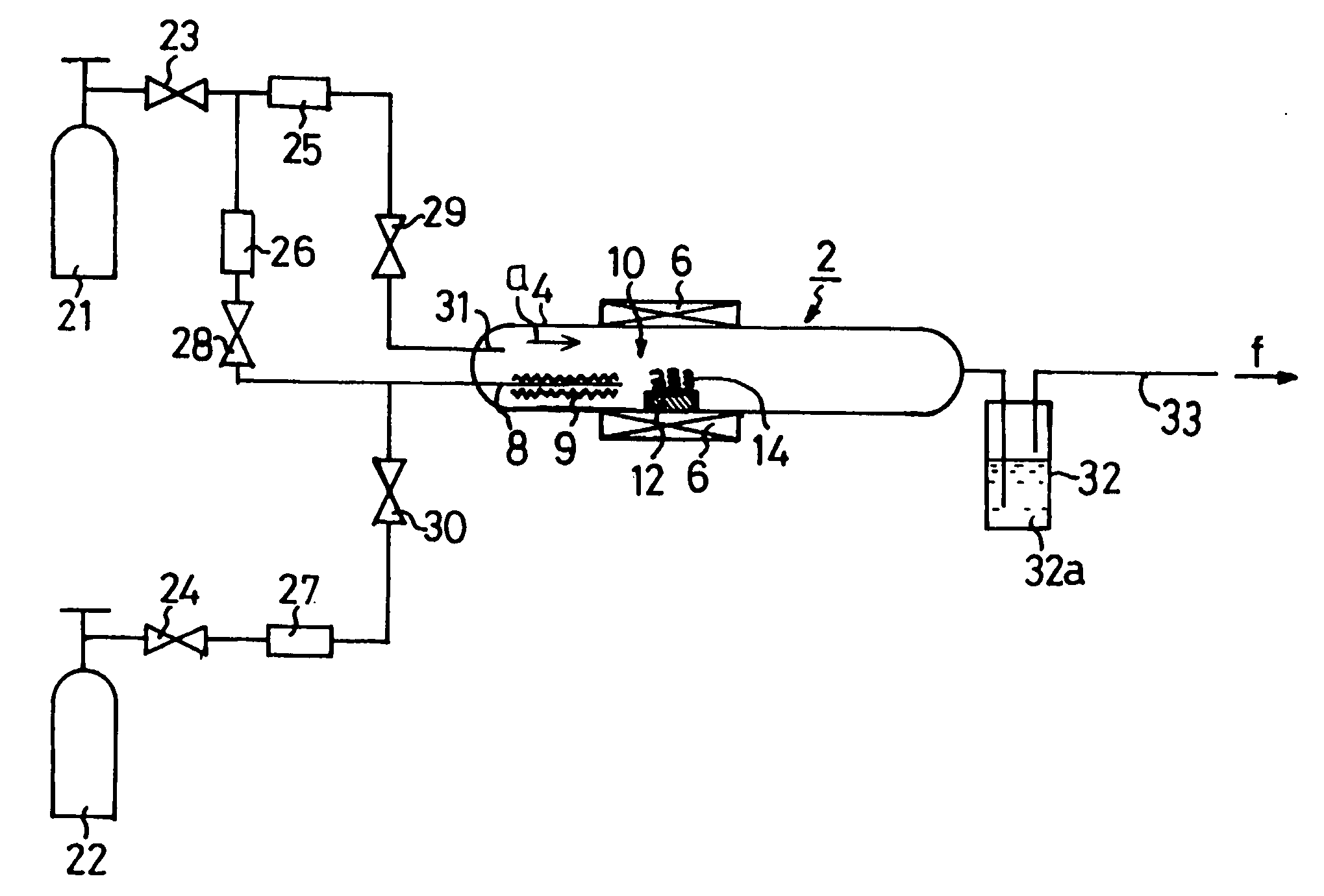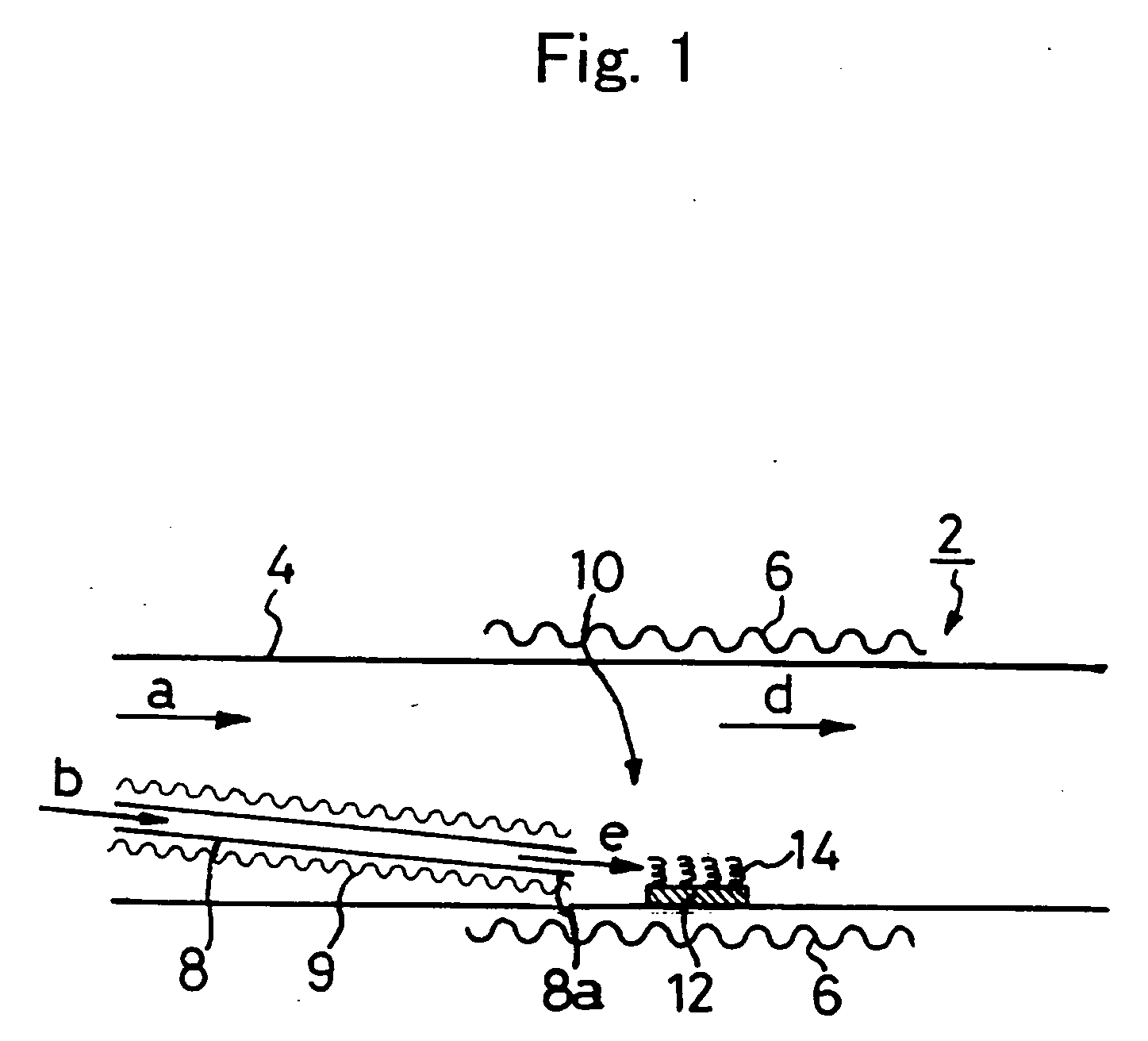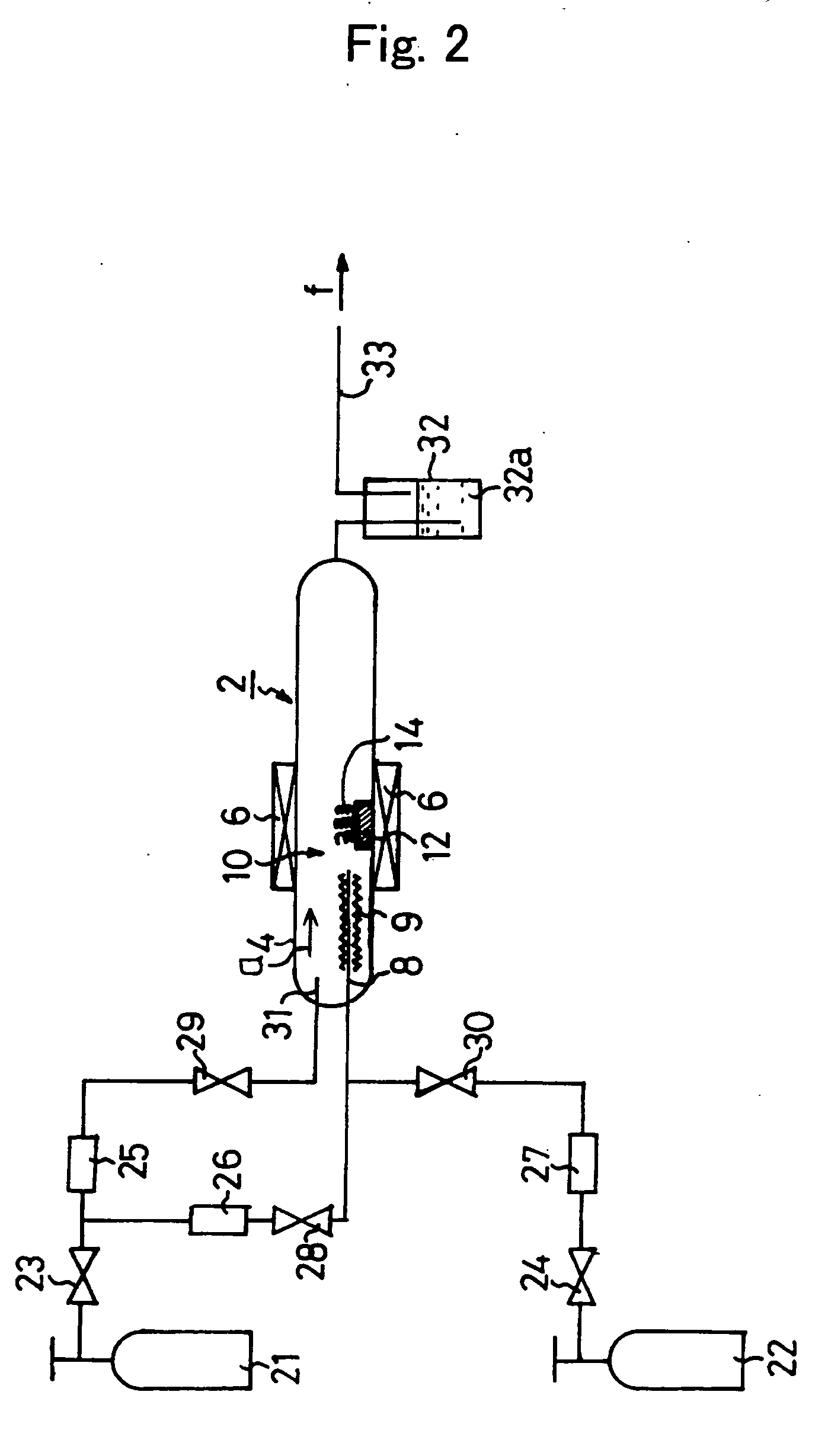Highly Efficient Material Spraying Type Carbon Nanostructure Synthesizing Method and Apparatus
a carbon nanostructure and high-efficiency technology, applied in carbonsing rags, chemical/physical/physicochemical processes, fulllerenes, etc., can solve the problems of wasteful byproducts, low yield, and method that is not suitable for mass production, so as to reduce the generation of tar-like byproducts and increase the yield of carbon nanostructures. , the effect of high efficiency
- Summary
- Abstract
- Description
- Claims
- Application Information
AI Technical Summary
Benefits of technology
Problems solved by technology
Method used
Image
Examples
example 1
Generation of Carbon Nanocoils
[0091]FIG. 1 is a schematic diagram showing the configuration of a case where a highly efficient material spraying type carbon nanostructure synthesizing apparatus according to the present invention is used for the synthesis of carbon nanocoils. In a highly efficient material spraying type carbon nanostructure synthesizing apparatus 2, a heater 6 for heating a reaction region is placed around the outside of a reaction tube 4, and this heater 6 for heating the reaction region provides a uniform reaction temperature region as a reaction region 10. A catalyst body 12 is placed in this reaction region 10.
[0092] In addition, a material gas supplying pipe 8, having a small diameter, is placed in reaction tube 4, and an end 8a of this supplying pipe reaches the middle of reaction region 10, and in addition, end 8a of the supplying pipe is placed in the vicinity of catalyst body 12. A heater 9 for heating the supplying pipe is placed around the material gas s...
example 2
Carbon Nanotubes
[0119]FIG. 13 is a schematic diagram showing the configuration of a highly efficient material spraying type carbon nanostructure synthesizing apparatus according to the present invention in the case where it is used for the synthesis of carbon nanotubes. This apparatus is a highly efficient material spraying type carbon nanostructure synthesizing apparatus 2 which is exactly the same as that of Example 1, but a catalyst body 12, the temperature of the reaction region, the temperature of the material gas supplying pipe, the material gas and the carrier gas are different.
[0120] The first difference is that a catalyst where Ni is sintered in highly pure γ-alumina pellets (99.95% or more) of which the sodium content is 0.01% or less is used as catalyst body 12. The second difference is that the temperature of the reaction region is maintained at 500° C. The third difference is that the temperature of the material gas supplying pipe is maintained at 250° C. In addition,...
example 3
[0124]FIG. 14 is a schematic diagram showing the configuration of a highly efficient material spraying type carbon nanostructure synthesizing apparatus according to the present invention in the case where a catalyst powder is used as the catalyst body. Though in FIG. 14, catalyst body 12 of FIG. 1 is formed of a catalyst structure, a catalyst powder 13 is made to flow in the direction of arrow a in Example 3. When catalyst powder 13 flows into a reaction region 10, it is heated to the temperature for generating carbon nanostructures by heater 6 for heating the reaction region while a material gas is sprayed against catalyst powder 13 from material gas spraying nozzle 8b so that carbon nanostructures 14 grow on the surface of catalyst powder forming particles 13a.
[0125] Material gas supplying pipe 8 is placed so that material gas spraying nozzle 8b reaches reaction region 10, heater 9 for the material gas supplying pipe is placed around material gas supplying pipe 8, and the entiret...
PUM
| Property | Measurement | Unit |
|---|---|---|
| temperature | aaaaa | aaaaa |
| temperature | aaaaa | aaaaa |
| temperature | aaaaa | aaaaa |
Abstract
Description
Claims
Application Information
 Login to View More
Login to View More - R&D
- Intellectual Property
- Life Sciences
- Materials
- Tech Scout
- Unparalleled Data Quality
- Higher Quality Content
- 60% Fewer Hallucinations
Browse by: Latest US Patents, China's latest patents, Technical Efficacy Thesaurus, Application Domain, Technology Topic, Popular Technical Reports.
© 2025 PatSnap. All rights reserved.Legal|Privacy policy|Modern Slavery Act Transparency Statement|Sitemap|About US| Contact US: help@patsnap.com



